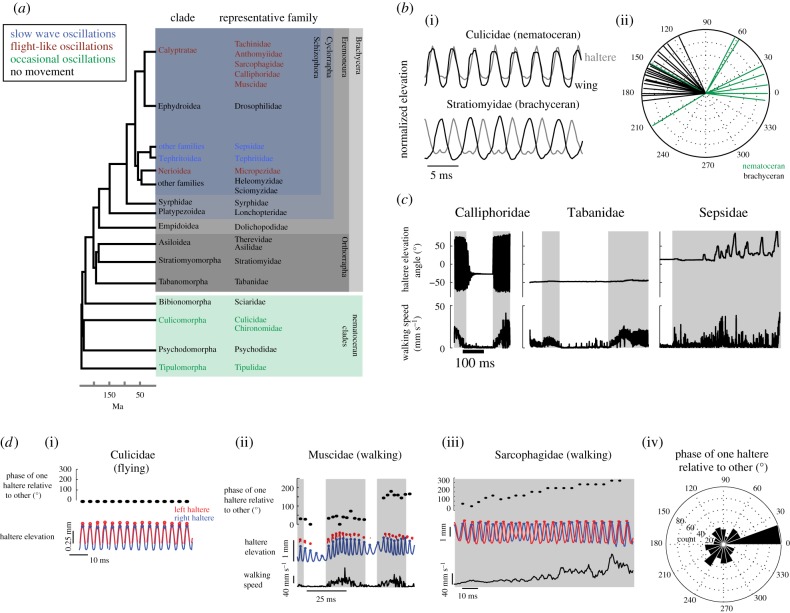Figure 1.
Diversity of haltere movement during flight and walking. (a) Phylogeny of Diptera after Wiegmann et al. [14]. Families are colour-coded according to haltere movements during walking. (b) (i) Traces of haltere and wing elevations in flight for a nematoceran (top) and brachyceran fly (bottom). (ii) Haltere oscillation phases relative to wingbeat for flies shown in table 1. The phase is represented by the angle of each line and the length of each line represents vector strength. (c) Raw data traces from videos of walking flies. Top trace: haltere elevation angle. Bottom trace: horizontal body velocity. (d) Phase relationships between the two halteres are different during walking and flying. (i) The two halteres of flying flies are consistently in phase (0°) with each other. Top: Phases of the left haltere (bottom, red) relative to the right (bottom, blue). Circles denote elevation peaks. (ii) The oscillation phases can change rapidly during walking. A housefly (Muscidae) shows a switch between in-phase haltere oscillations and out-of-phase haltere oscillations. Data were captured with a single camera and thus, both haltere bases were not visible in all frames. Grey boxes designate walking bouts. (iii) A two-camera video capturing both halteres shows a gradual shift in phase. (iv) Rose plot of the distribution of relative phases of one haltere to the other includes the entire oscillation cycle, n = 7 trials in four flies.

